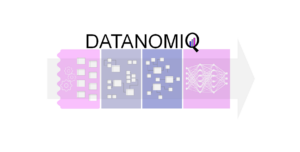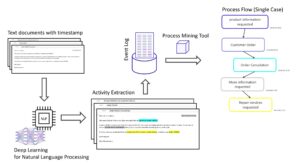No matter what industry you are in, you need information systems that analyse your business data to help you make decisions. These systems are commonly referred to as Business Intelligence (BI). In fact, most BI systems suffer from shortcomings that can be remedied. Moreover, modern BI can partially automate decisions and enable comprehensive analyses with a high degree of flexibility in use.
1. UNIFORM DATA BASIS OF HIGH QUALITY
In every company, hundreds or even thousands of decisions have to be made every day at the operational level, which can be made much more well-founded if there is good information in the masses, thus increasing turnover and saving costs. In contrast, however, there are many source systems from the company’s internal IT system landscape as well as other external data sources. The procurement and consolidation of information often takes up entire groups of employees and offers a lot of room for human error.A system that provides at least the most relevant data for business management at the right time in good quality in a Trusted Data Zone as a Single Source of Truth (SPOT).
2. FLEXIBLE USE BY DIFFERENT STAKEHOLDERS
Many BI systems fail to gain company-wide acceptance because certain departments or technically defined groups of employees are largely excluded from BI.Modern BI systems enable views and the necessary data integration for all stakeholders in the company who depend on information and benefit equally from the single source of truth approach.
3. EFFICIENT POSSIBILITIES FOR EXPANSION AND MAINTENANCE
Good BI sees itself as a service to stakeholders with a short time to market. The right design, choice of software and implementation of data flows/models ensures much shorter development and implementation times for enhancements and new features.Furthermore, not only the technology but also the choice of organisational form is crucial, including the design of roles and responsibilities – from technical system connectivity to data provision and preparation to analysis and support for end users.
4. INTEGRATED CAPABILITIES FOR DATA SCIENCE AND AI
BI and Data Science or AI will continue to converge, as predictive models flow back into Business Intelligence at the latest after going live. BI will probably evolve into ABI (Artificial Business Intelligence). However, many companies are already using data mining and predictive analytics in the company and are relying on uniform or different platforms with or without integration to BI.Modern BI systems also offer data scientists a platform to access high-quality as well as more granular raw data.
5. SUFFICIENTLY HIGH PERFORMANCE
One reason for poor performance is the hardware, which can already be adapted to higher data volumes and more analysis complexity in an almost linearly scalable manner using cloud systems. The use of cloud also enables the modular separation of storage and computing power from the data and applications and is therefore generally recommended, but not necessarily the right choice for all companies.In fact, performance is not only dependent on hardware, the right choice of software and the right choice of the design of data models and data flows also plays an even more decisive role. Because while hardware can be changed or upgraded relatively easily, changing the architecture requires much more effort and BI expertise. In this context, unsuitable data models or data flows will certainly bring even the latest hardware in maximum configuration to its knees.
6. COST-EFFICIENT DEPLOYMENT
Professional cloud systems that can be used for BI systems offer total cost calculators, for example Microsoft Azure, Amazon Web Services and Google Cloud. These calculators – with instruction from an experienced BI expert – can be used not only to estimate costs for the use of hardware, but also to calculate ideas for optimising costs. Nevertheless, the cloud is still not the right solution for every company and classic calculations for on-premise solutions are necessary.Cost efficiency, by the way, can also be increased with a good selection of suitable software. This is because proprietary solutions are bound to different licensing models and can only be compared with each other via application scenarios. Apart from that, there are also good open source solutions that can be used largely free of charge and can be used for many applications without compromises.
Are you interested in a data assessment for your BI & Analytics? Then write to us without obligation at info@datanomiq.de or use our call-back service!




